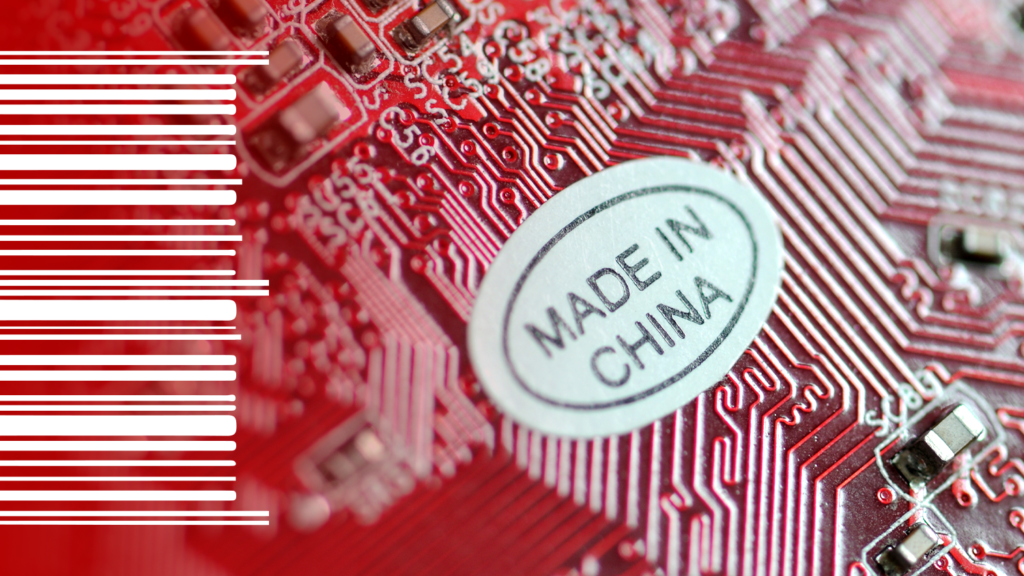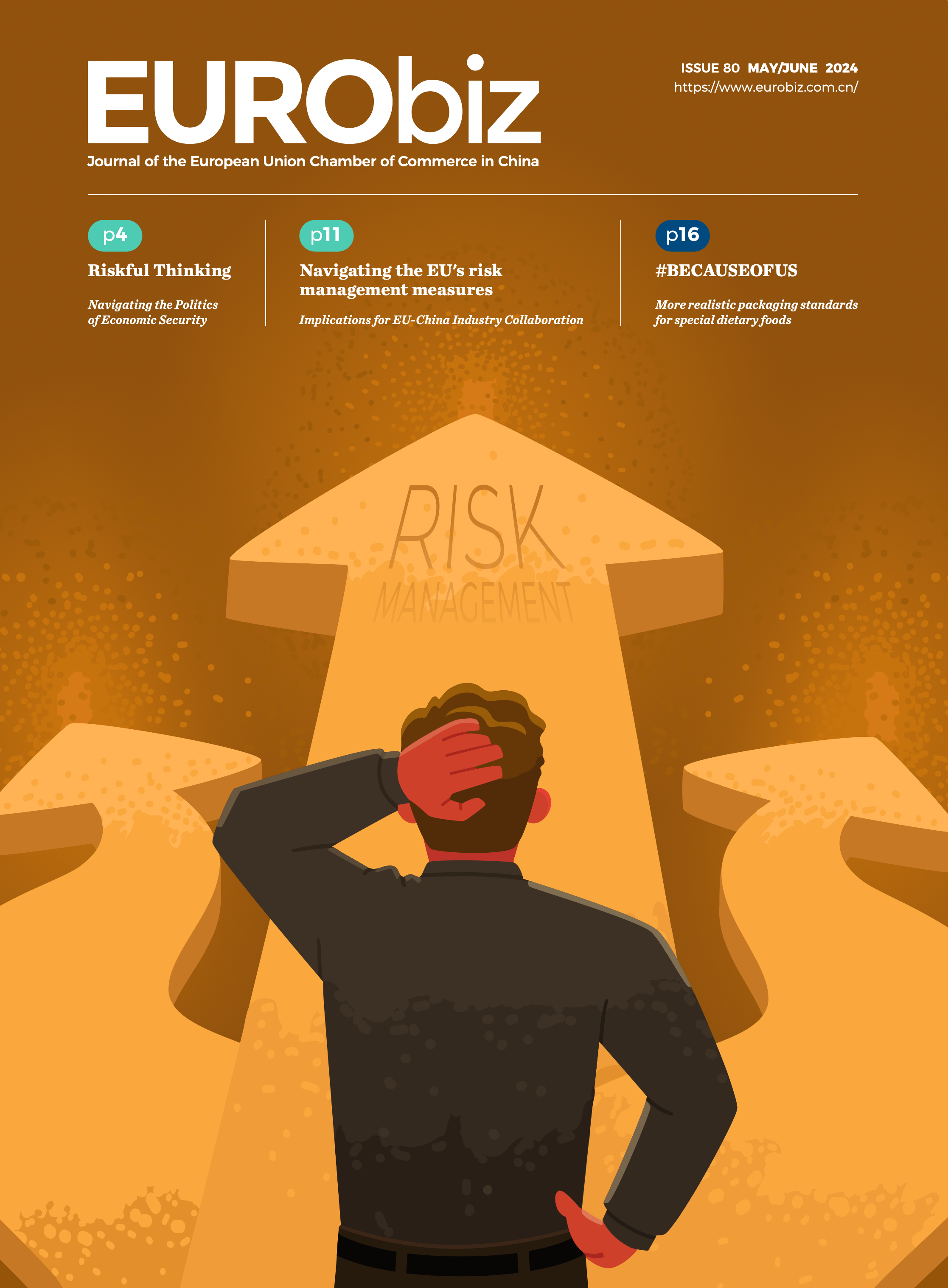
Considerations for manufacturers when building supply chains
A large swathe of European companies that invested into China at the end of the 20th century, or even well into the 2000s, came with the purpose of establishing a production base in order to eventually start conquering the emerging domestic market. The two key ingredients in successfully getting their operation off the ground were human resources and the establishment of a local supply chain. Fabian Blake, vice chair of the European Chamber South China Chapter, outlines how circumstances have changed in recent years.
Just as the available workforce in a particular location or industry can be developed into a very effective talent pool through engagement with the authorities and educational institutions, a company’s supply chain can also be shaped to its best advantage through a similar development process. Whether you are an automotive company, an aircraft manufacturer, a consumer electronic provider, a fast-moving consumer goods producer or even a trading company, your supply chain is at the core of the operations of your business. Needless to say, this reliance on the supply chain is further exacerbated by the locally available technologies and innovations, something both large corporates and small businesses became all too familiar with as they navigated through the 2010s in China.
A lot of (murky) water has flowed under the bridge in the last half decade. Following almost half a century of rampant economic growth, the intensifying competition between the top powers of this world triggered tensions that quickly got translated into tariffs and sanctions, which ultimately end up being detrimental to all global players. In addition, the emergence and spread of the pandemic presented another unprecedented challenge for supply chains in 2020. Disruptions to supply and demand at the end of the value chain kept amplifying, creating a ‘bullwhip effect’, with the well-known consequences of exorbitant shipping costs, and scarcity of components and commodities. And if this was not enough, the already ‘fractured’ supply chains are now enduring even bigger stress following the Russian invasion of Ukraine.
Building a supply chain
If we look at companies with manufacturing capabilities on the China market, one would see many different types of approaches to setting up a supply chain. A key factor in individual approaches will be the nature of the business model followed. For example, a company producing in China with a business model mainly focussing on export might find itself in a difficult position due to tariffs or sanctions arising from geopolitical tensions, or specific standards applicable to certain components or critical parts that make them a challenge to secure, all of which can hamper the company’s ability to present a competitive offering in terms of lead time or costs. Their supply chain will be constructed to take these factors into account.
How a supply chain is constructed can also be strongly influenced by the end goal of tackling domestic market share. Most companies with the aim of conquering the Chinese domestic market usually have to undergo a rather deep re-design or re-engineering of their product to meet local demand in terms of features, prices or other ‘go-to-market’ requirements.
Beyond these plain strategic considerations, supply chains are hardly ‘plug and play’ items. A lot of involvement is required from each of the concerned parties, while the available and matching technologies will also have an impact. Moreover, many manufacturers that deal with offshore clients have to set industry standards with their suppliers (or tier-partners) before adequate or satisfactory products can be supplied.
The right technological level is bespoke to each and every manufacturing project that comes along. This is often not perceived from a ‘front-end’ perspective, but nevertheless is a major reason why the efforts required to re-shore are often under-estimated. In fact, re-shoring is a process that can easily span many years. One can easily understand that supply chains would differ in both capability and capacity in the United States, Europe, China or Southeast Asia, let alone an emerging economy in Asia or Africa. Large multinational companies typically secure certain skills or product applications in specific territories not just for intellectual property protection reasons but also for know-how, or sometimes quite simply because the required raw material or substrate that is the foundation of the project (often the main cost driver) is only available or produced there or in accordance with a specific standard.
A phenomenon that has been observed in the European Chamber’s annual Business Confidence Survey for the past two years is the rather strong trend towards on-shoring among members since 2020. This is a natural consequence of the relative availability of well-suited technologies on the domestic market, and the growing intolerance for disruptions to operations arising from China’s stringent COVID containment policy and tight border controls, amidst other challenges. As new variants of COVID continue to emerge, the milder but more transmissible Omicron variant (and most importantly, subduer of the deadlier Delta variant), came as a ‘positive’ surprise to a worn-out and long-struggling world. However, the Chinese authorities face a dilemma over whether to make a U-turn on zero-COVID policies that had worked rather well in the previous two years.
For the coming 12–18 months, foreign-invested businesses will have to look into their crystal ball and decipher how the complex situation they are in will unfold. There is quite a palpable tension arising from the recent lockdowns in major cities and the restrictions imposed on individuals and companies. While some are optimistic that the stringent COVID containment measures will be relaxed following the National Congress scheduled for the end of autumn 2022, perhaps the degradation of international relationships pre- and post-pandemic makes one thing certain: the general conditions for business in China won’t return to what they were in the late 2010s. We can call for greater and ongoing reforms to facilitate the operations of foreign-invested businesses in China, but we should still not fool ourselves about the time it will take for these measures to take full effect.
As the world progressively leaves the unipolar modus of the late 20th century behind, and more and more nations adhere to a multilateral configuration, each and every business will be required to adapt their supply chain strategy to the emerging conditions.
Fabian Blake has been vice chair of the Board of Director of the South China Chapter of the European Chamber since 2021. He is a Belgian national who currently holds the position of managing director with AMS Assembly Foshan. Fabian has lived and work in China since 2008. In these 14 years spent exclusively in South China. he has contributed to the operational development of large corporations and managed much smaller Chinese business units active in engineering services, offering added value services to European customers.


Recent Comments